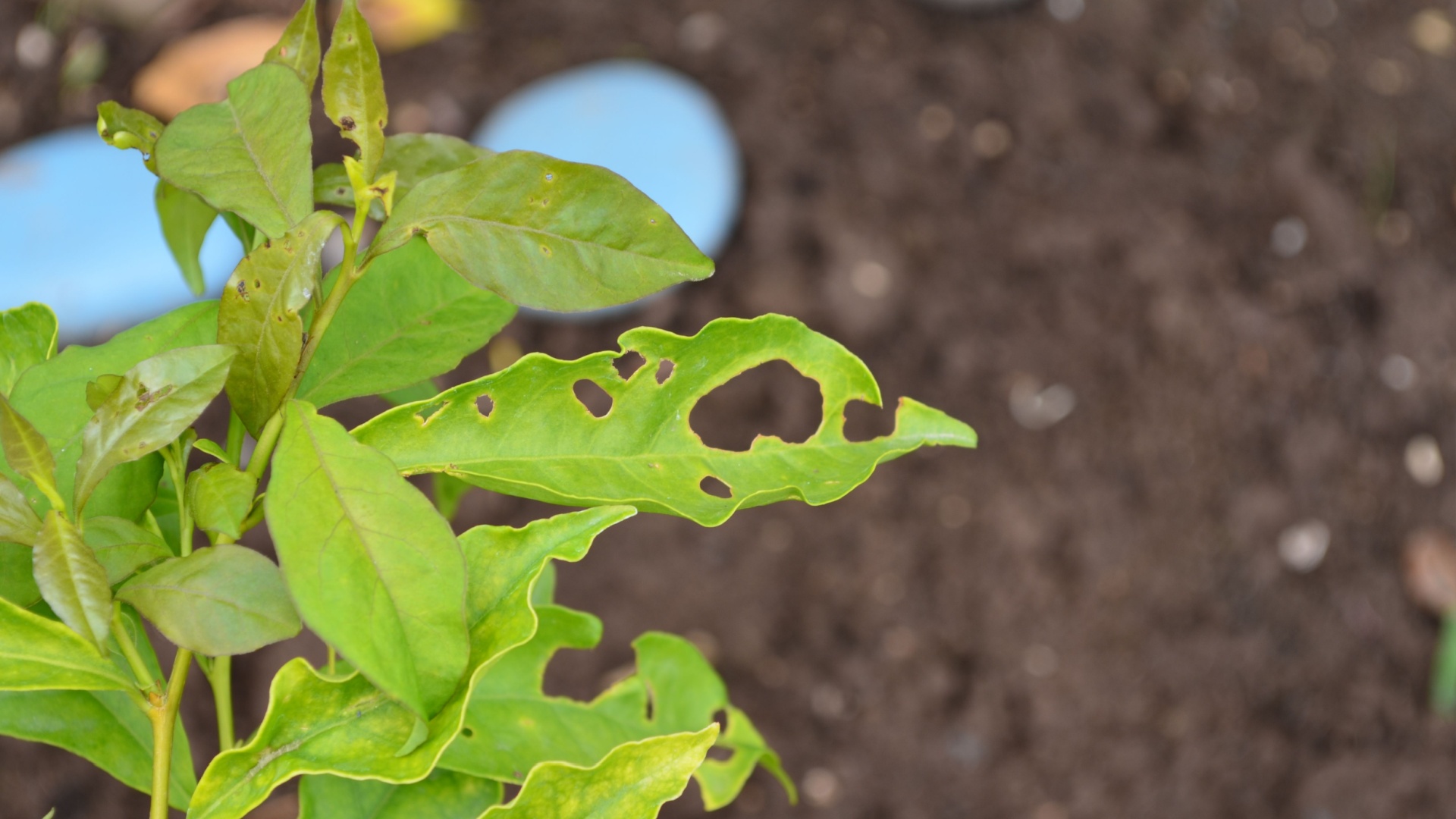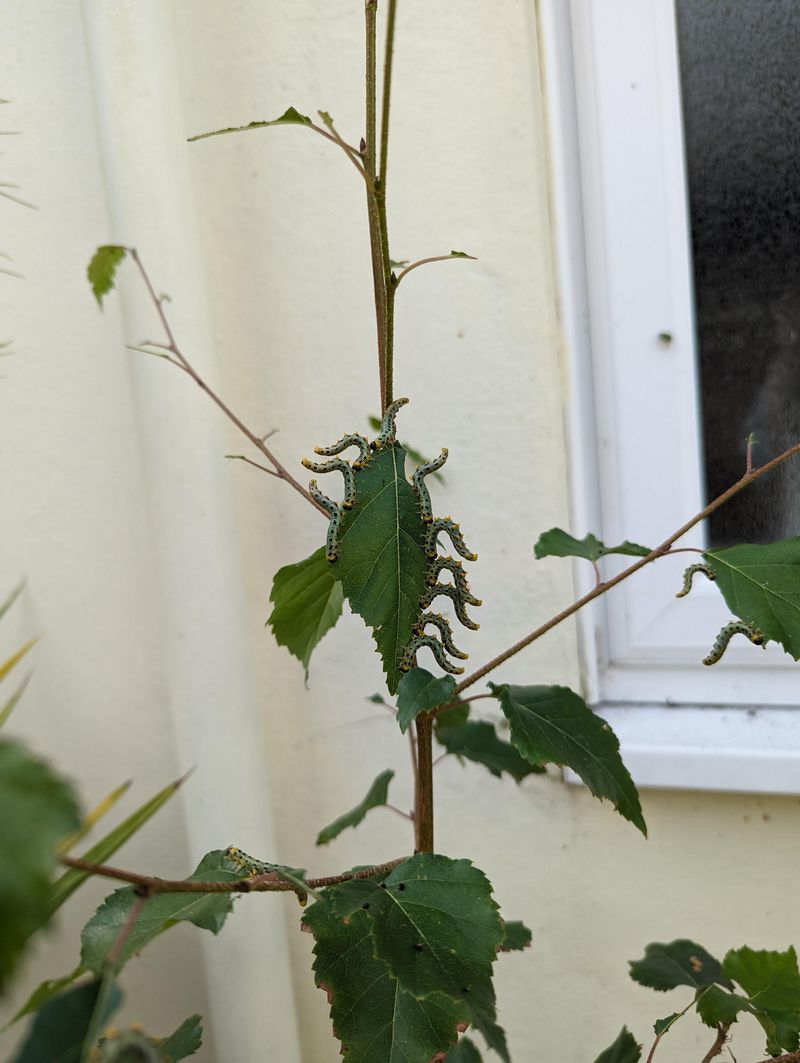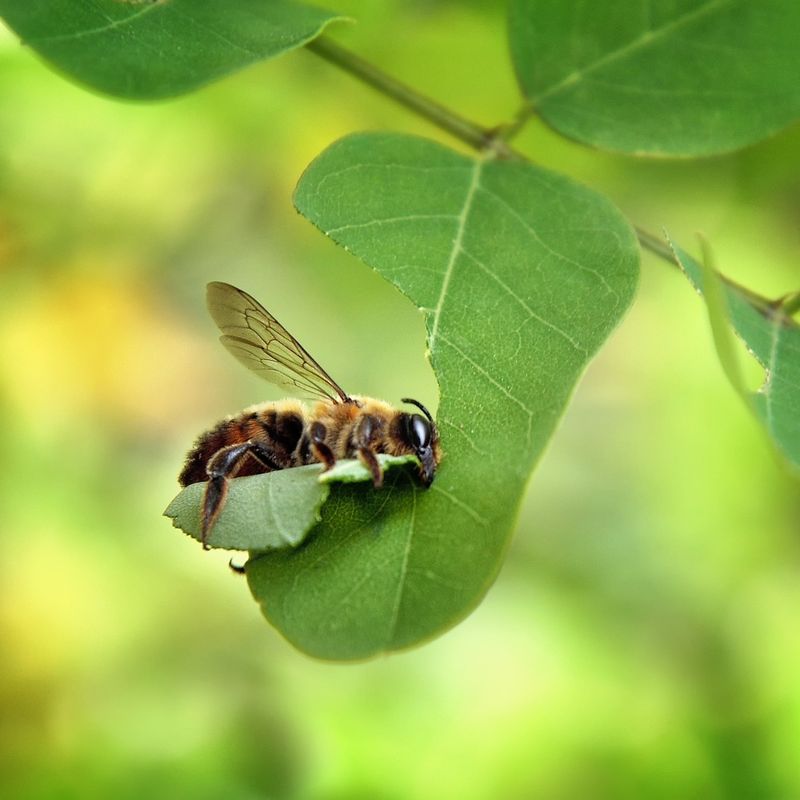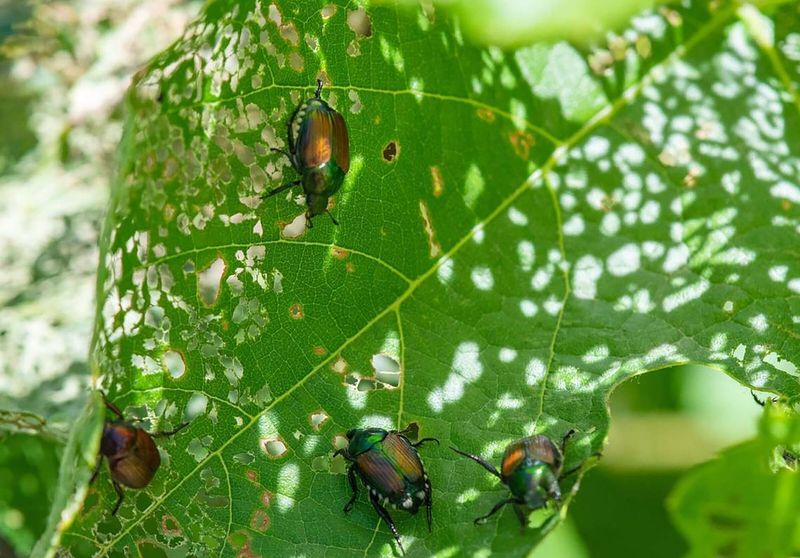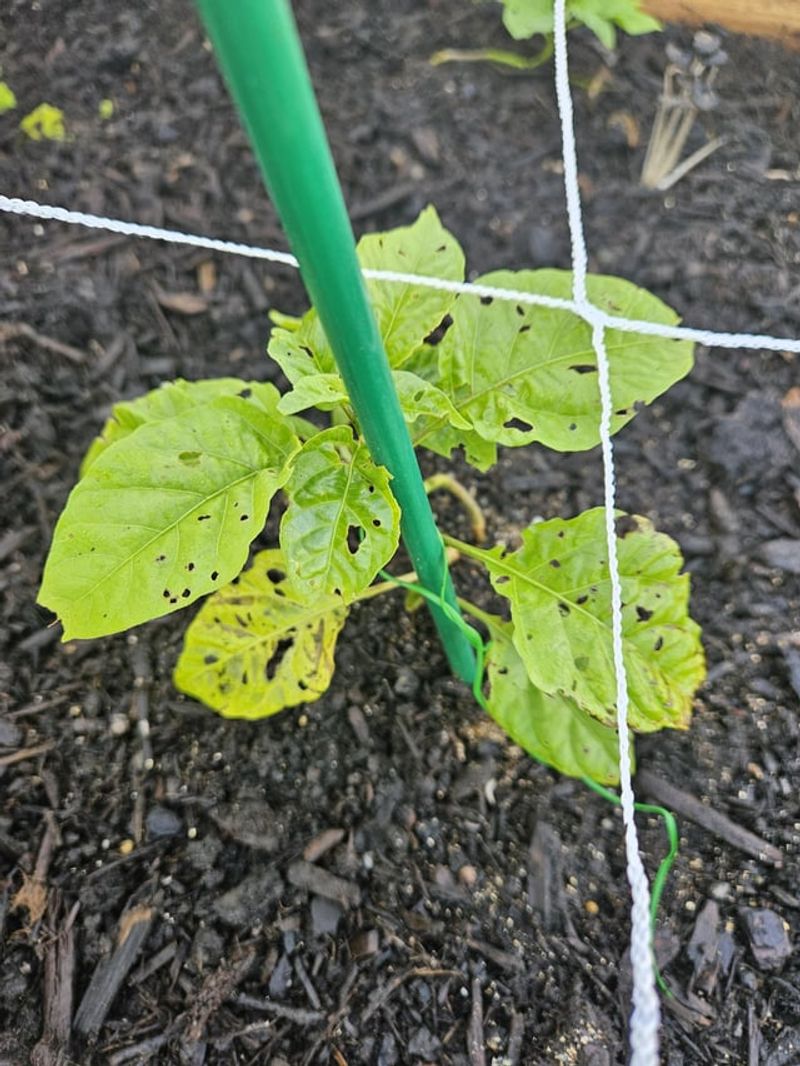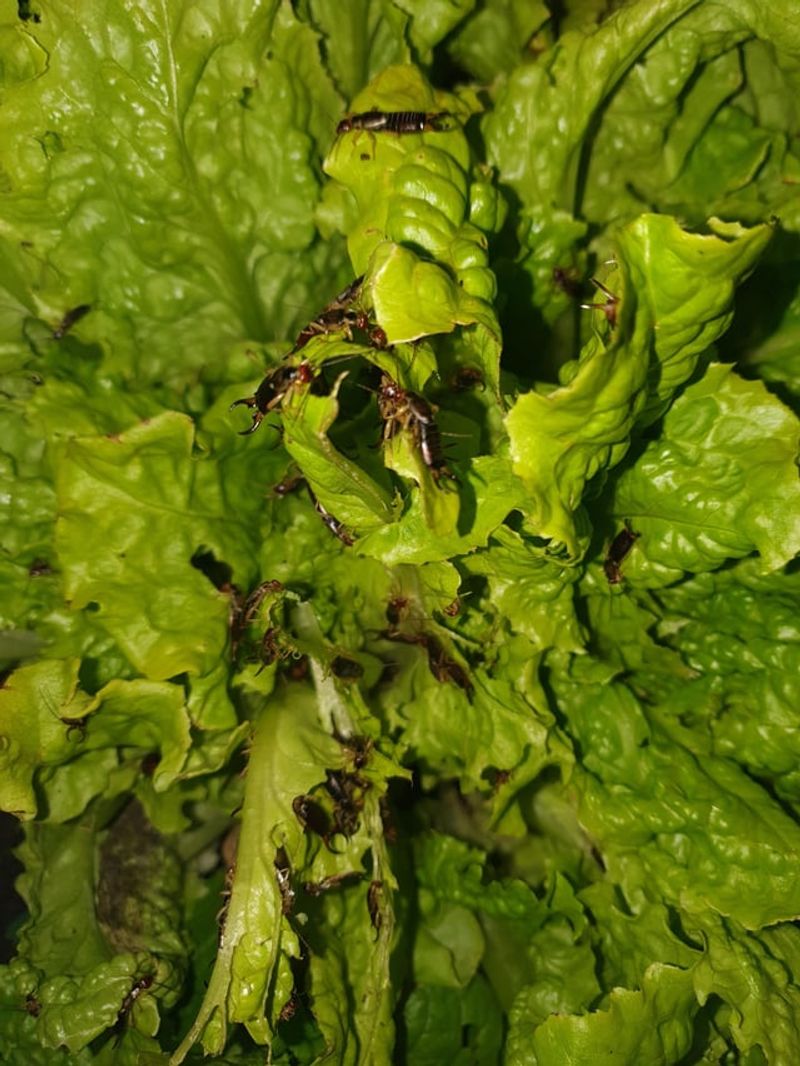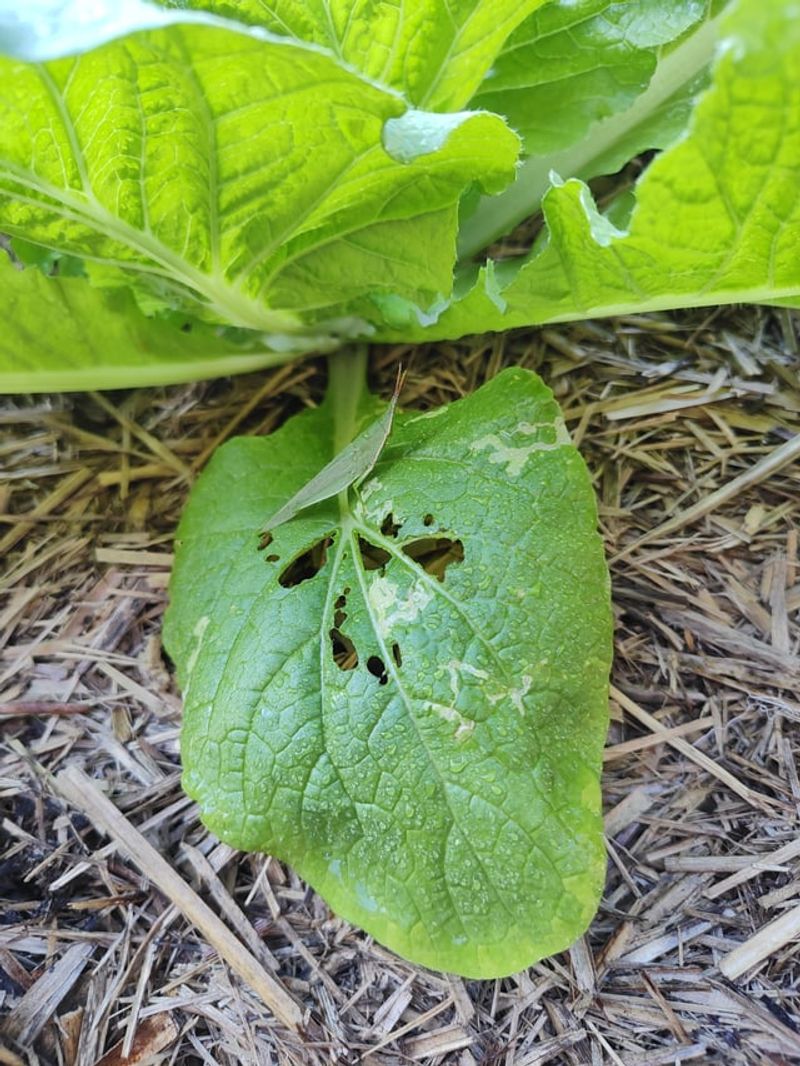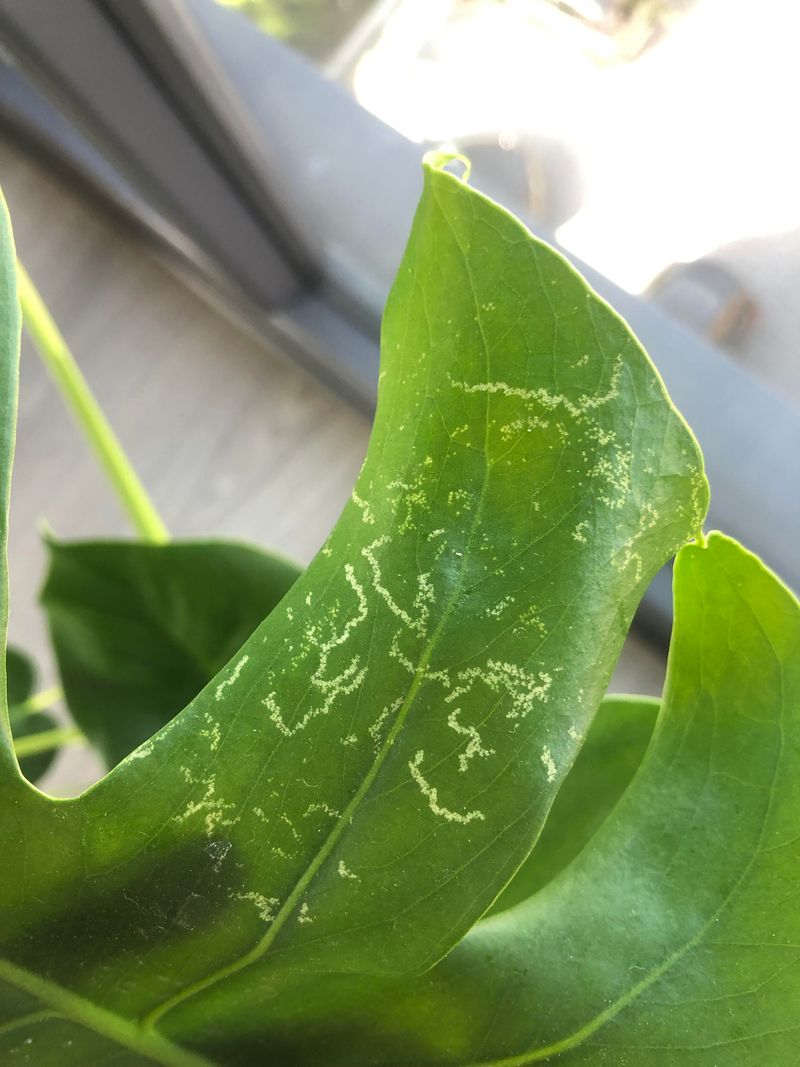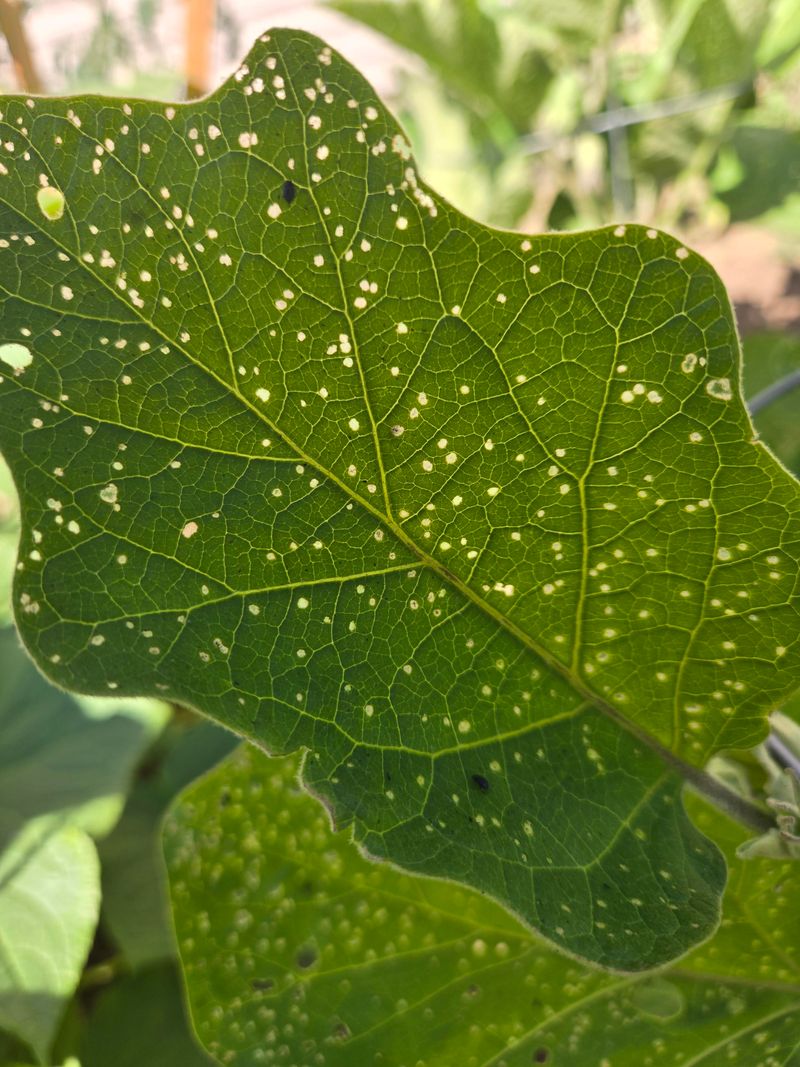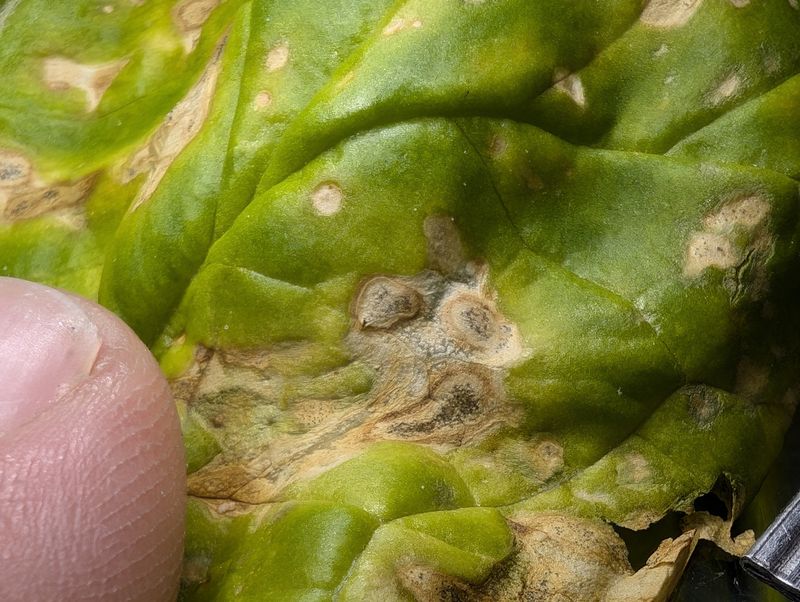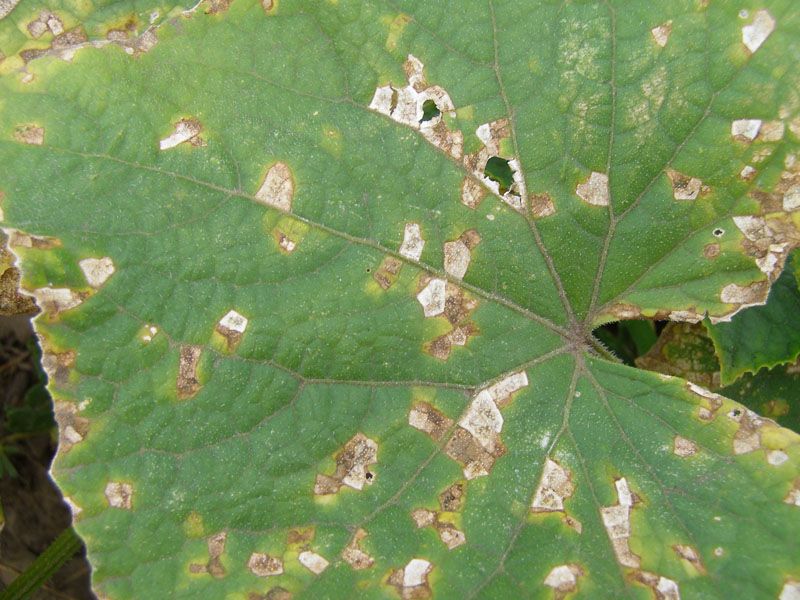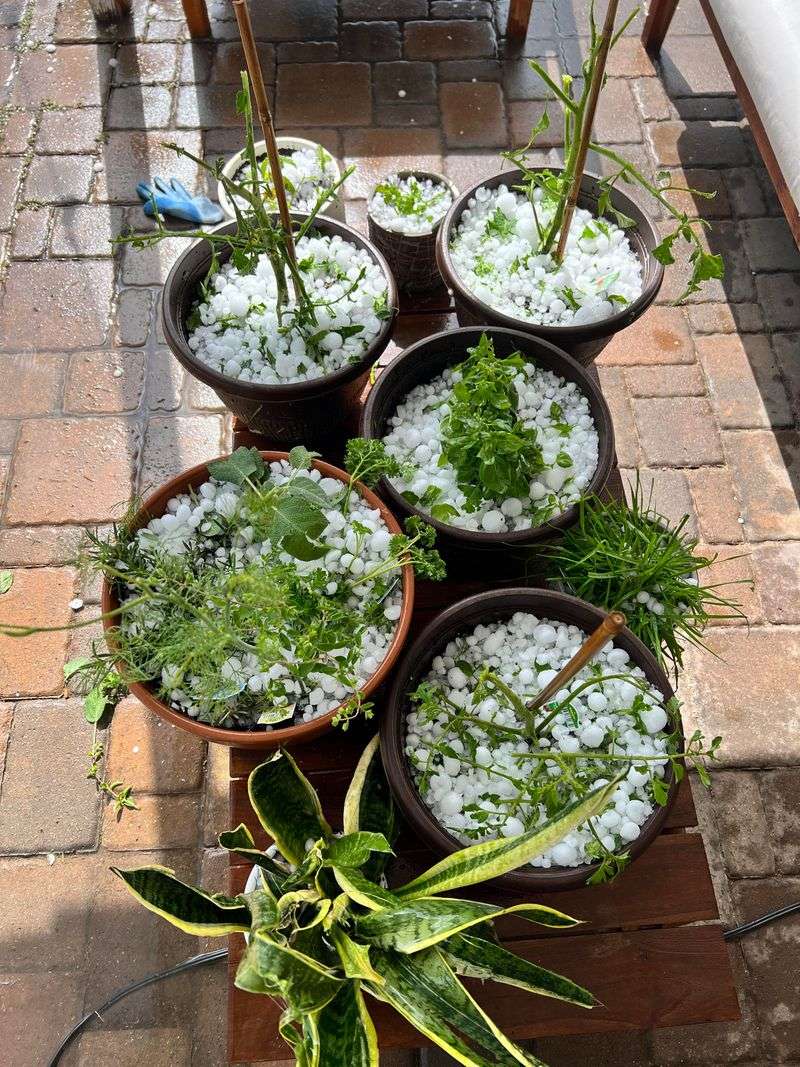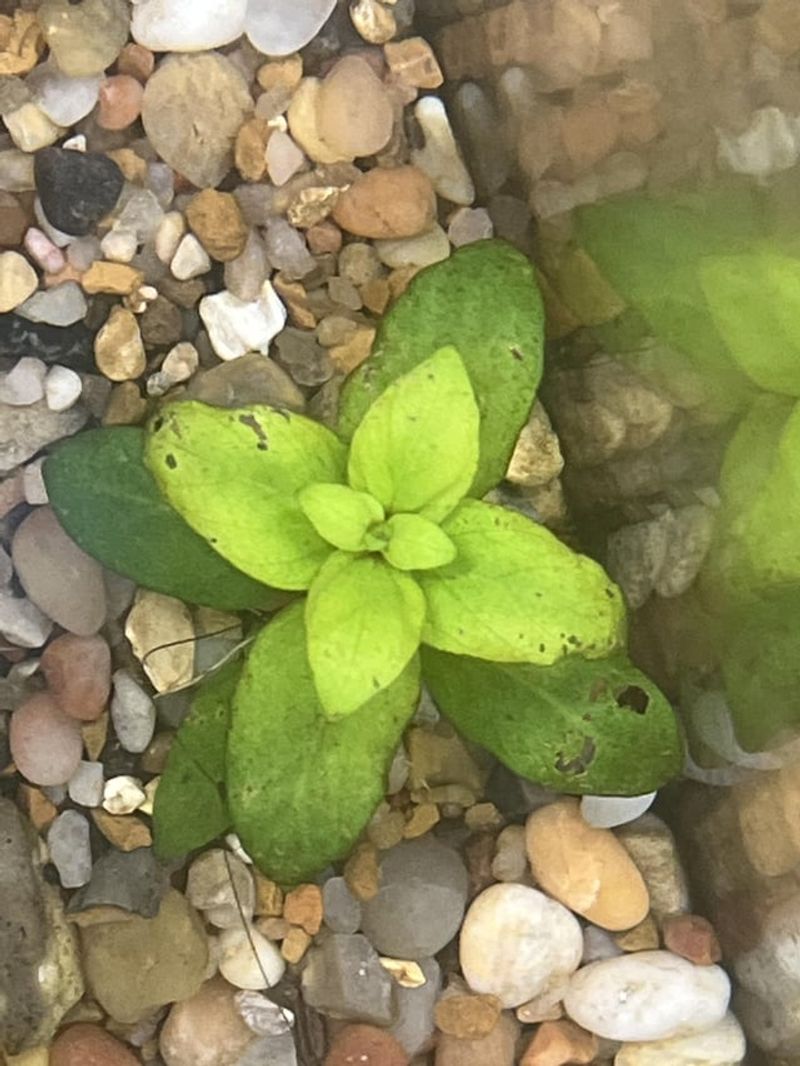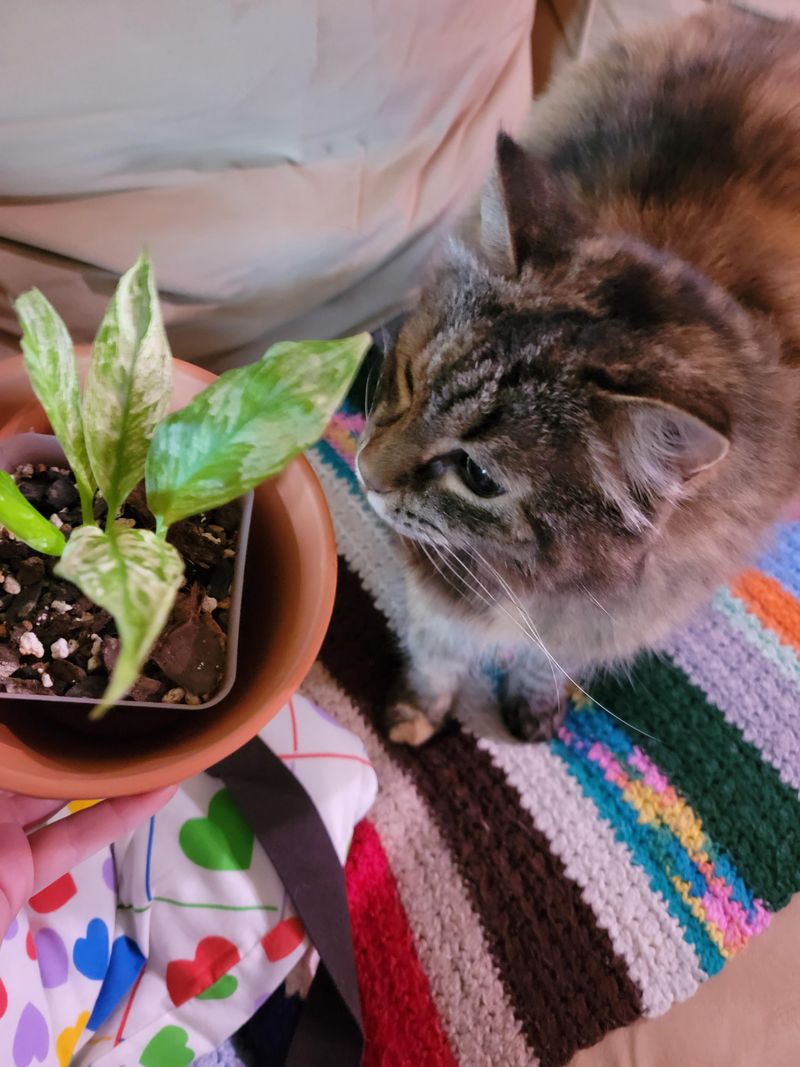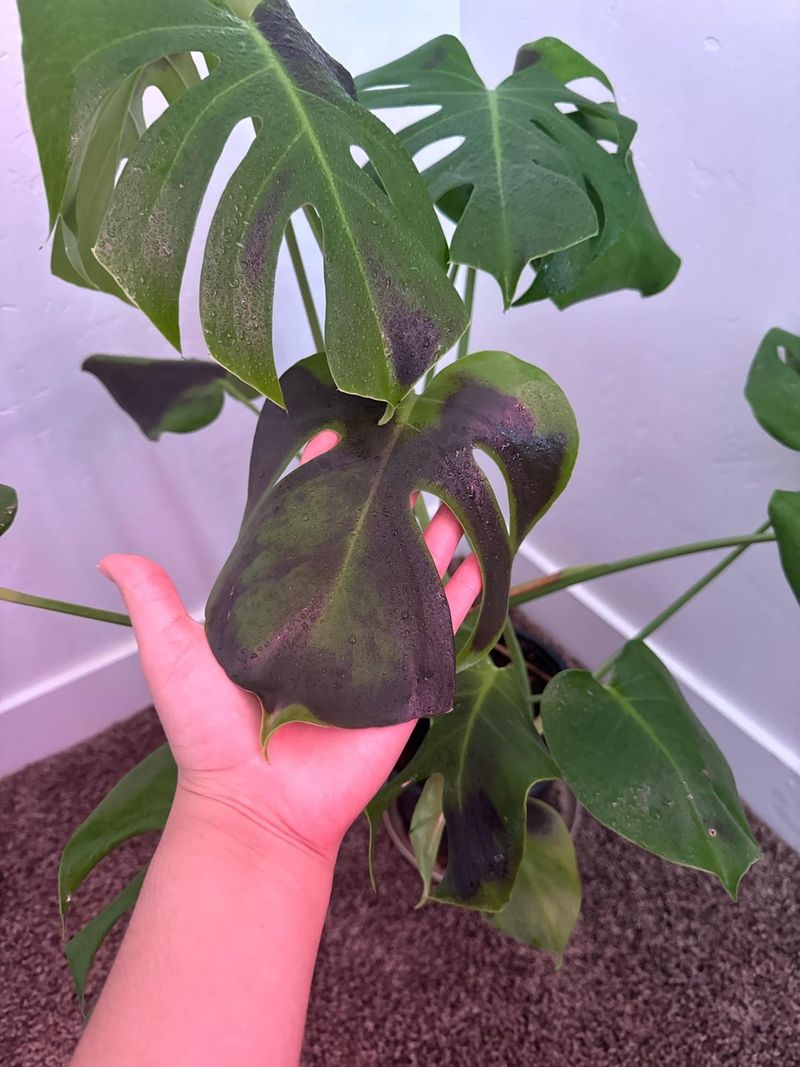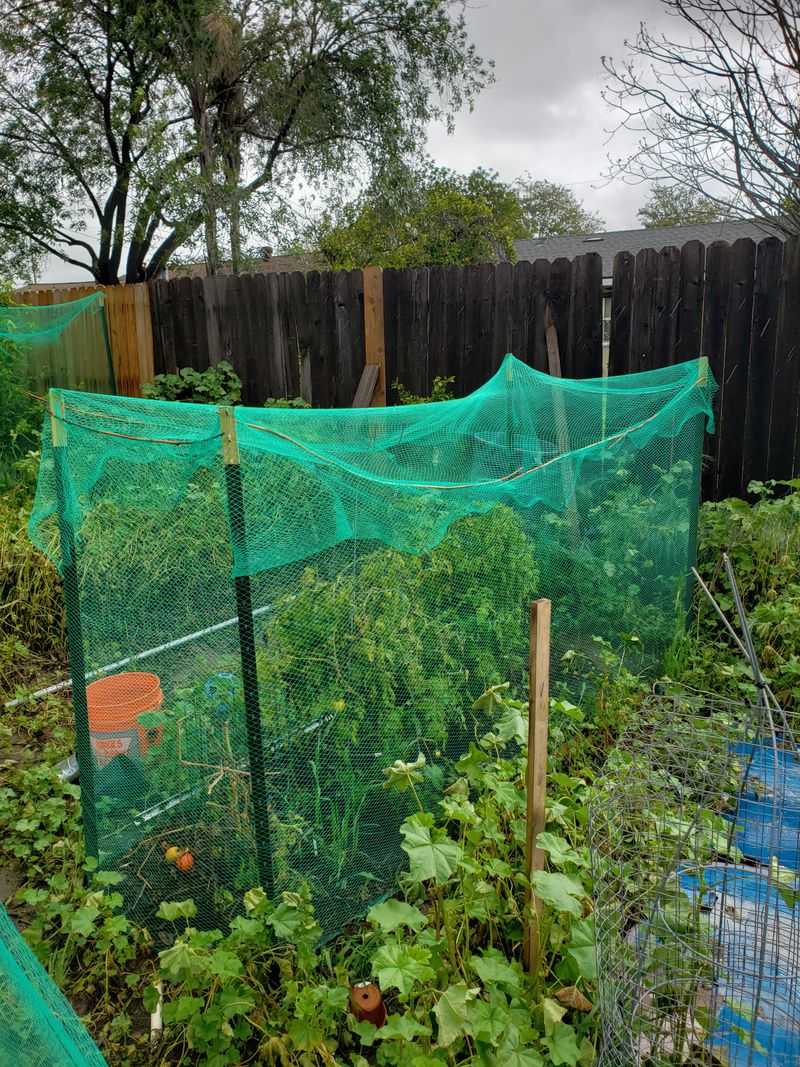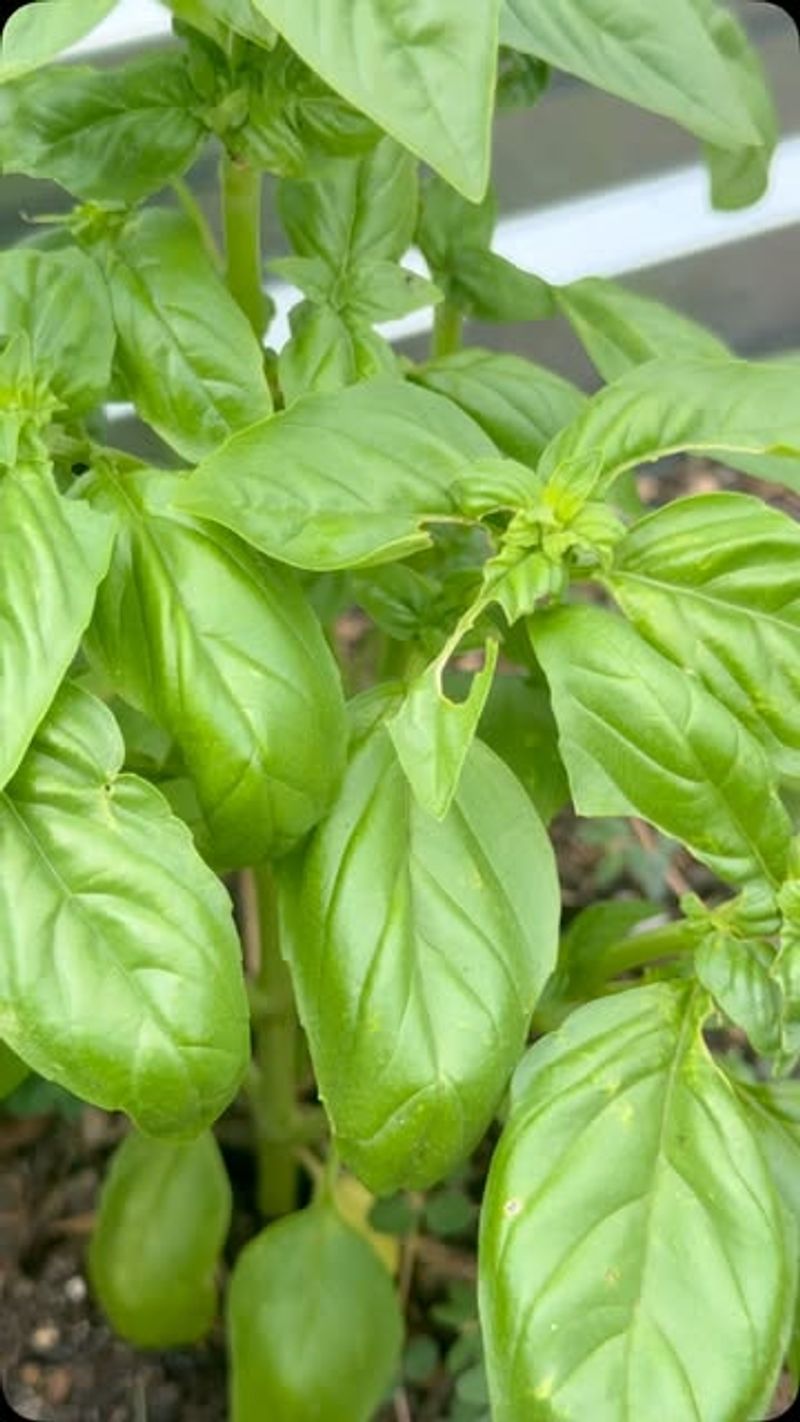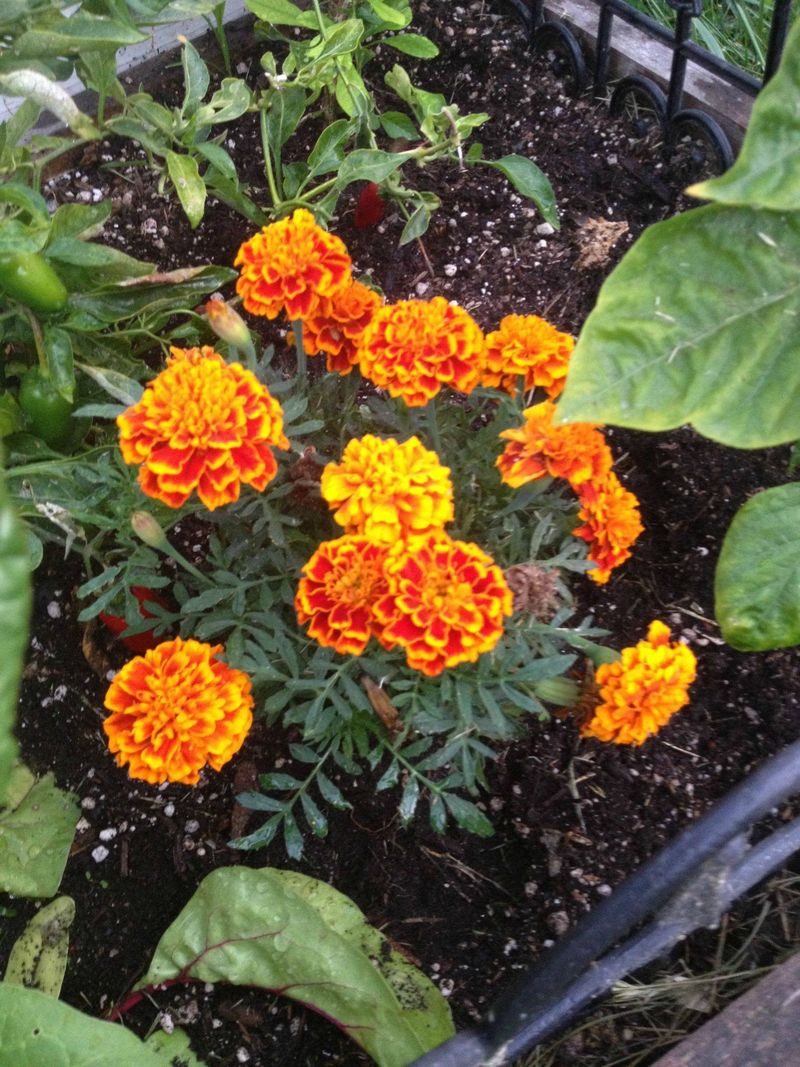Holes in your plant’s leaves can feel like a mystery—but there’s usually a clear culprit. From sneaky pests to fungal foes and watering mistakes, damaged foliage is often a warning sign you can’t ignore.
These 14 common causes will help you diagnose the problem fast—plus 4 simple fixes to get your plant back to its healthy, hole-free self.
1. Hungry Caterpillars Munching Away
Those green wriggly creatures might look cute, but they’re leaf-eating machines! Caterpillars can chew through plant tissue overnight, leaving irregular holes or entire sections missing.
Check the undersides of leaves and along stems where these hungry visitors like to hide during the day. They’re most active in warm months and tend to target soft-leaved plants like vegetables and flowers.
2. Sneaky Leaf-Cutting Bees
Unlike destructive pests, leaf-cutting bees are actually beneficial pollinators with a unique habit. These industrious insects cut perfect circular chunks from leaves to build their nests.
The damage appears as clean, round holes along leaf edges – almost like someone used a hole punch. While alarming to see, this damage is mostly cosmetic and doesn’t harm the plant’s overall health.
3. Destructive Japanese Beetles
With their metallic green-copper bodies, Japanese beetles might look pretty, but they’re garden nightmares. These pests create distinctive skeletal leaves by eating the soft tissue between leaf veins.
The damaged leaves look like lace or window screens. Japanese beetles attack in groups, focusing on roses, grapes, and fruit trees. Their feeding frenzy typically peaks in midsummer when adults emerge from the soil.
4. Sneaky Slug and Snail Damage
Night raiders with slimy trails, slugs and snails are masters of stealth. They create irregular holes and ragged edges on leaves, especially near the ground.
Look for the telltale silvery slime trails that glisten in morning light – the signature calling card of these mollusks. They particularly love tender seedlings and soft-leaved plants like hostas, lettuce, and basil, often causing extensive damage during damp, cool weather.
5. Voracious Earwig Feeding
These nocturnal insects with pincer-like tails might look intimidating, but they’re mainly interested in your plants. Earwigs create jagged, irregular holes in leaves and can damage flower petals too.
They typically feed at night and hide in dark, moist places during the day. Young, tender growth is their favorite target, and damage often appears in spring when plants are putting out fresh leaves.
6. Hungry Grasshopper Invasions
Those jumping insects with powerful back legs can demolish plants in record time. Grasshoppers create irregular, jagged holes that start from the leaf edge and work inward.
During severe infestations, they may strip plants completely. The damage is most common in hot, dry weather and near field edges or wild areas. Their powerful jaws can tackle even tough plant material that other insects avoid.
7. Leaf Miners Creating Tunnels
Unlike surface feeders, leaf miners tunnel between leaf surfaces, creating distinctive squiggly lines or blotches. These tiny larvae live inside the leaf, protected from predators and weather.
Hold affected leaves up to light to see the transparent tunnels where they’ve eaten the inner tissue. The damage looks like white or brown trails that wind across the leaf. Though unsightly, leaf miner damage rarely kills plants.
8. Tiny Flea Beetle Attacks
Small but mighty, flea beetles create a distinctive “shotgun” pattern of tiny holes across leaves. These shiny, jumping beetles earned their name from their ability to leap like fleas when disturbed.
They particularly target vegetable seedlings in the cabbage family, eggplants, and potatoes. Young plants suffer most, as the numerous small holes reduce photosynthesis capability and can stunt growth during critical development stages.
9. Fungal Leaf Spot Diseases
Not all holes come from hungry critters! Fungal infections can cause dead spots that eventually fall out, creating hole-like symptoms. These diseases typically start as dark, water-soaked spots that expand over time.
The center of these spots may drop out as the dead tissue dries, leaving behind perfectly round holes. Wet conditions, poor air circulation, and overhead watering make plants more susceptible to these fungal problems.
10. Bacterial Leaf Spot Complications
Bacteria create a different type of leaf damage that can be mistaken for insect feeding. Infected areas initially appear as water-soaked spots that turn brown or black with yellow halos.
As the infection progresses, the dead tissue in the center falls out, creating holes. These holes often have angular edges following leaf veins, unlike the rounded holes from insects. Splashing water spreads bacteria between plants, making rainy seasons particularly problematic.
11. Wind and Hail Damage
Mother Nature herself can punch holes in your plants! Strong winds whip leaves against each other or nearby objects, creating tears that develop into holes.
Hailstorms are even more direct – ice pellets literally punch through leaf tissue. The resulting damage appears as random holes throughout the plant, often with torn edges. Unlike pest damage, weather-related holes typically appear suddenly across multiple plant species after a storm.
12. Nutrient Deficiencies Creating Weak Spots
Plants lacking essential nutrients develop weakened tissue that can deteriorate and form holes. Potassium deficiency, for instance, causes yellow leaf margins that eventually die and fall away.
Calcium deficiency creates weak cell walls, making leaves prone to tearing even with gentle handling. These nutritional holes typically appear in patterns across the plant, affecting older or newer leaves consistently depending on the specific nutrient missing.
13. Curious Pets Sampling Plants
Your furry friends might be secret plant nibblers! Cats, dogs, and even pet birds sometimes take exploratory bites out of houseplants, leaving behind distinctive tear patterns.
Pet damage typically appears as larger, jagged holes or torn edges, often concentrated on lower or easily accessible leaves. Besides the holes, you might notice teeth marks or stems bent from being pawed at. Be careful, as many common houseplants are toxic to pets.
14. Accidental Human Damage
Sometimes we humans are the culprits behind plant holes! Brushing against plants with tools, clothing, or jewelry can puncture or tear leaves.
Overzealous pruning, rough handling during repotting, or even children playing can create damage. Human-caused holes tend to be larger, more random, and often accompanied by crushed stems or other mechanical damage. Unlike pest damage, these injuries don’t spread or increase over time.
15. Natural Pest Control Methods
Fight nature with nature! Introduce beneficial insects like ladybugs, lacewings, and praying mantises to your garden. These hungry helpers devour plant-damaging pests without harming your greenery.
Neem oil offers another natural solution – it disrupts pest feeding and reproduction while being safe for most beneficial insects. Bird-friendly gardens also help, as our feathered friends consume enormous quantities of insects daily, providing free pest management.
16. Protective Barriers Against Pests
Sometimes the best defense is a good barrier! Floating row covers create physical shields that block insects while allowing light, water, and air to reach plants.
For slugs and snails, copper tape around pots or raised beds creates a mild electric shock when they try to cross. Diatomaceous earth sprinkled around plants creates a microscopic cutting barrier that deters soft-bodied pests without chemicals.
17. Proper Plant Care Practices
Healthy plants naturally resist pests and diseases better than stressed ones. Proper watering (at the base, not on leaves), adequate spacing for air circulation, and regular cleaning of dead plant material eliminate hiding places for pests.
Choose disease-resistant varieties when possible, and rotate crops in vegetable gardens to prevent pest buildup. Regular garden inspection helps catch problems early, before holes become widespread.
18. Strategic Plant Companions
Some plants naturally repel garden pests! Marigolds release compounds that deter nematodes and other soil pests. Aromatic herbs like basil, mint, and rosemary confuse insects with their strong scents.
Nasturtiums act as trap crops, attracting aphids away from your valuable plants. Strategic companion planting creates a natural defense system that reduces pest pressure while adding beauty and diversity to your garden space.

